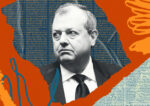Trending
Mobile banking cuts into bricks & mortar biz
Meanwhile, TD Bank, BofA, Wells Fargo and Citibank scout out new branches in NYC

Many years ago, commercial and savings bank branches were built as
architectural cathedrals.
Most of these large bank locations have been closed and converted into catering
halls and exhibition space. They include the former home of Citibank at 55 Wall
Street,Greenwich Savings Bank On Broadway And 36th Street now known as
Gotham Hall, Cipriani 42nd Street, formerly known as the Bowery Savings Bank,
Capitale at 130 Bowery and the iconic Williamsburgh Savings Bank branch on
Broadway in the Williamsburgh section of Brooklyn.
These physical pillars of retail banking were replaced by conventional retail bank
locations throughout the city. Over the past four decades a number of branches
have been replaced by ATMs, the first of which was installed in Chemical Bank (the
predecessor of JPMorgan Chase) in September 1969 at its branch in Rockville
Center, LI.
Retail banking continues to be a major component of the New York banking
environment. TD Bank, Bank of America, Wells Fargo and Citibank, for example,
are scouting out retail locations in the five boroughs and beyond.
Meanwhile, following the arrival of Remote Deposit Capture, which allows a
user to scan checks and transmit the scanned images to a bank for posting
and clearing, many commercial banks have reduced the number of new bank
locations. RDC has been called “the most important development that U.S.
banking industry has seen in years” by the Federal Reserve and others. Nearly
all of the top banks in the U.S. have either launched the service, or are well on
their way to doing so.
With the advent of RDC and the changes in the banking environment, what will
become of retail banks?
Deloitte reported that “in the past five years, mobile banking has grown nearly
100 percent compounded annually, with the most occurring after 2007, when
Apple introduced the iPhone. Though Generation Y is leading the charge in
adoption, boomers are coming on strong. Mobile banking is expected to surpass
online banking as the most widely used channel by 2020 — if not sooner.”
Brian Johnston, banking consultant practice leader and a principal at Deloitte
Consulting, said, “mobile banking is well on its way to surpassing online banking
as the most widely used banking channel.”
Deloitte reports that the cost of processing a mobile transaction can be as much
as 10 times lower than at an ATM. Mobile banking can make a fast contribution
to the bottom line. A bank with 100 branches and 250 ATMs could save $5
million annually by converting 20 percent of transactions to mobile.
While mobile services are here, banks must prepare to defend their franchises
against threats from financial institutions, mobile carriers, credit card processors
and other non-bank competitors that want to help consumers conduct financial
transactions where they and their mobile devices are.
Michael Stoler is a columnist for The Real Deal and host of real estate programs “The
Stoler Report” and “Building New York” on CUNY TV and on WEGTV in East Hampton. His
radio show, “The Michael Stoler Real Estate Report,” airs on 1010 WINS on Saturdays and
Sundays. Stoler is a director at Madison Realty Capital as well as an adjunct professor at
NYU Real Estate Institute, and a former contributing editor and columnist for the New York
Sun.




